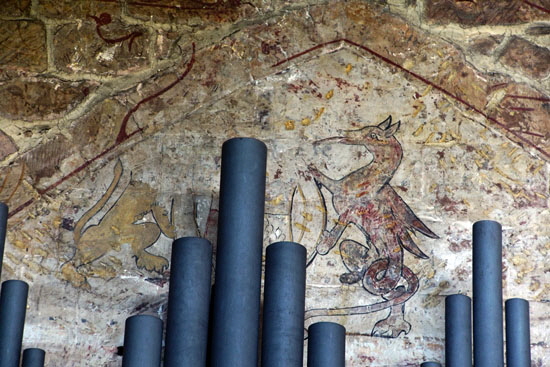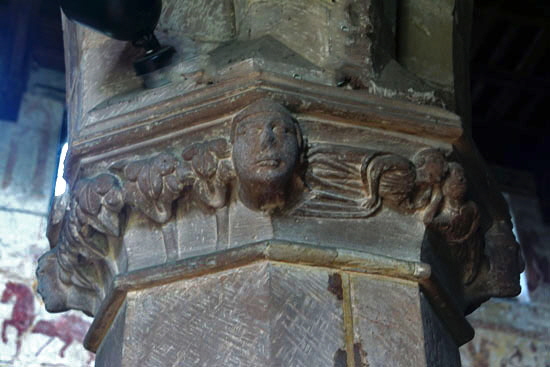|
|
||||||||||||||||||||||||||||||||||||||||||||||||||||||||||
|
Please sign my Guestbook and leave feedback |
||||||||||||||||||||||||||||||||||||||||||||||||||||||||||
|
Recent Additions |
||||||||||||||||||||||||||||||||||||||||||||||||||||||||||
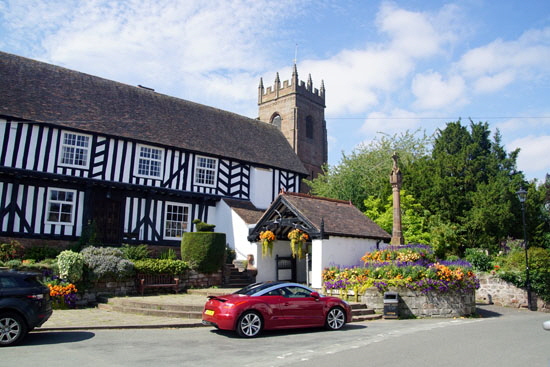 |
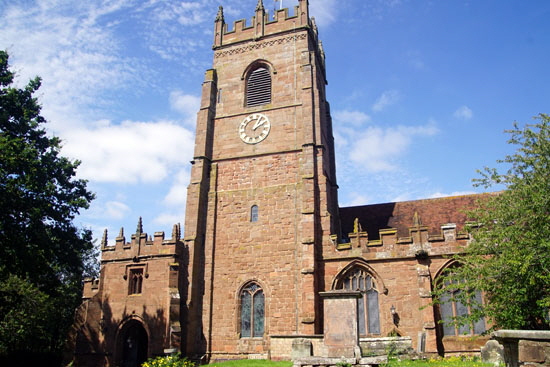 |
|||
|
Left: You don’t need to visit Claverley just for the church: it is a picture postcard pretty village all round. Here my car is parked just in front of the lychgate through which the path winds to the church beyond. The “black and white” building to the left is old vicarage that dates from the fifteenth century. It is hard to imagine a more desirable home. Right: The church from the south. The tower is oddly located such that it intrudes into the nave. It doesn’t look too bad here - even picturesque - but it makes for a real muddle inside the church. |
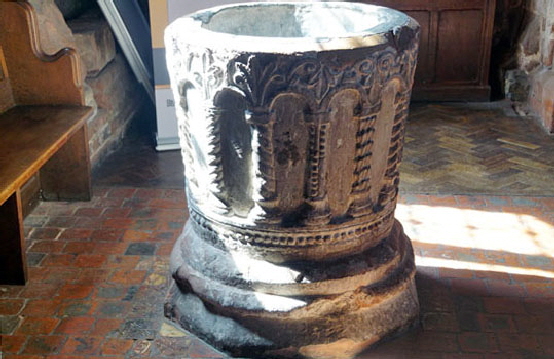 |
 |
|
Left: A Norman church without a Norman font is, to quote Price Harry in Blackadder the First, “Like St Leonard’s Day without the Eunuchs”. So many were removed to make way for less “barbarous” fonts after the Reformation although many have since been recovered from farmyards and ditches - they’re not easy to destroy - and restored to their rightful places. Claverly’s is not one of the absolute belters of its genre but it is actually rather pretty and well executed. Right: No photograph can give the sense of awe that the painted frieze on the north aisle produces. That’s just as well because otherwise you could just look at my photographs rather than go yourself! It is so like the style of the Bayeux Tapestry that you might, like myself, have trouble absorbing the fact that it is believed to be early thirteenth century rather than “Norman”. That train of thought, to which I confess, is however slightly warped. Yes, the last Norman king within the strict definition was Stephen who reign ended in 1154. We do not, however, go on to suggest that Norman architecture ended at that point. Depending on how you like to look at it Norman architecture had between thirty and fifty years to go - it is defined by the architectural style rather than by the ruling dynasty. Thus when we see this extraordinary frieze we are surely right again to suggest that it is Norman in style. Note that there is also painting between the clerestory windows but this, of course, was later as was the clerestory itself. |
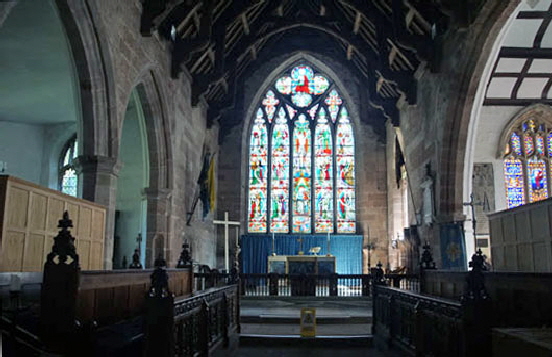 |
|||
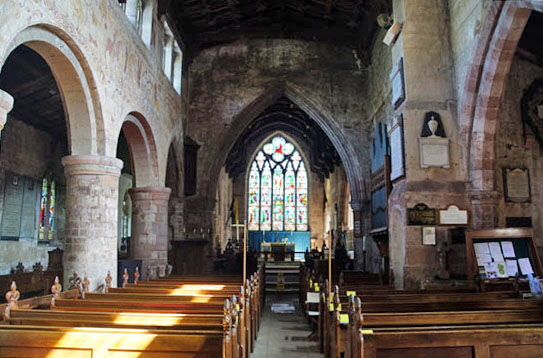 |
|||
|
Left: Looking towards the east. The Norman north aisle contrasts with the muddle on the south side. Here the aisle is interrupted by the intrusive tower. The lowest parts of it are themselves Norman so it is more accurate to say that the south side had to be developed in such a way as to accommodate it. There may have been a Norman south aisle but we only know that the present one was mid to late thirteenth century. Right: The chancel was rebuilt in the mid fourteenth century as shown by the style of the original east window. It is a very long chancel as befits what is a very imposing church. There are chapels on each side of the chancel. |
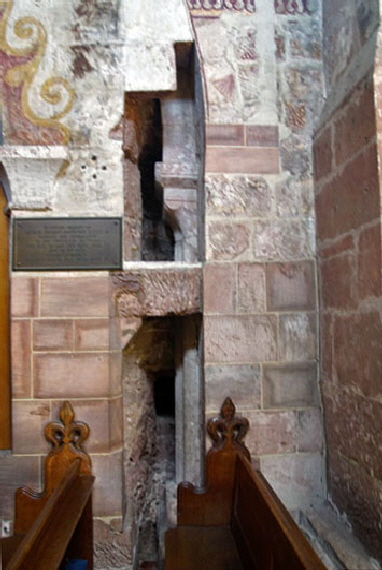 |
|||||
 |
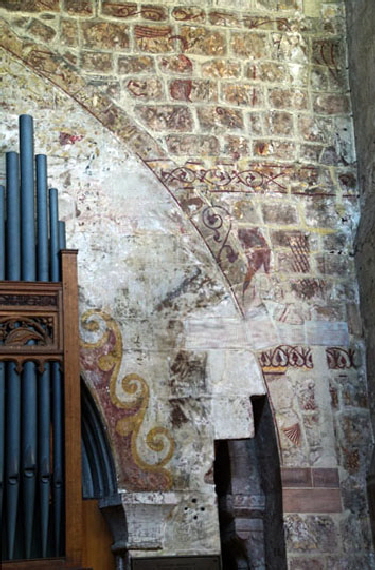 |
||||
|
Left: The west end. This church benefits from a west window because it has a south tower, not a western one. The window has “Y tracery” which is an early Decorated style trope that suggests a date of around 1300. Pevsner, however, is right to say that “the whole exterior is terribly renewed” so we can’t be sure. Centre: This b***er’s muddle on the south side gives you some idea of how messy it all is with a southern tower. I am not going to even try to explain what is going one here - and your lives are too short also - but suffice to say that we seem to be seeing two Norman arches one behind the other. Right: This picture is taken just a little higher up than the previous one. You can still see that bit of Norman capital peeping out from the gap in the arch. The arch in the foreground looks like it has been partly filled in and then painted - so we can see remnants of two different paint schemes, And then some joker shoved the organ pipes in front of it all! |
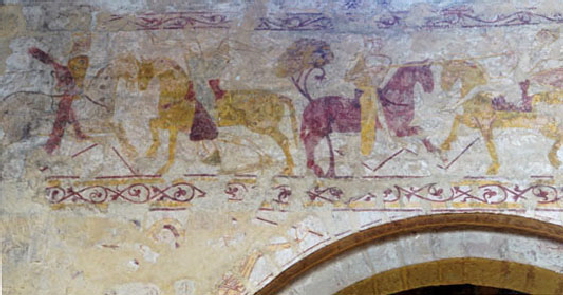 |
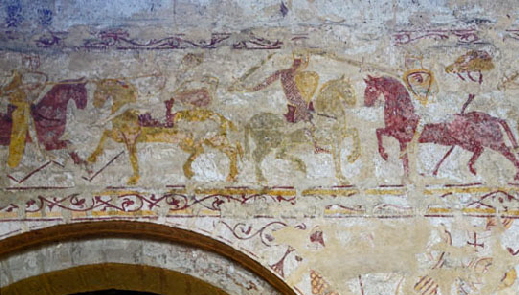 |
||||
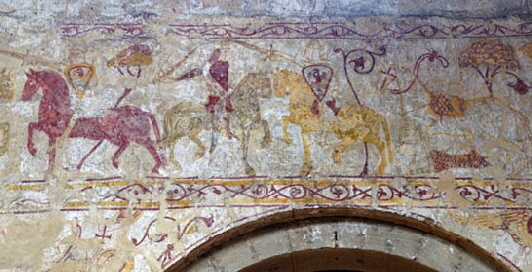 |
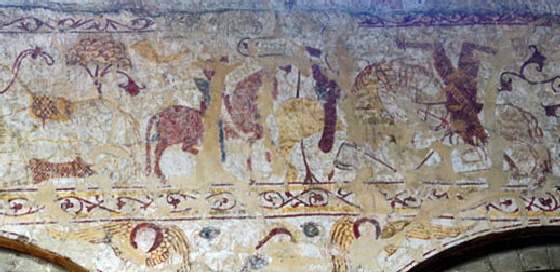 |
||||
|
Well now for the exciting bits, Unless you have been living on the Planet Zog - and if you are reading this site you must have at least a passing interest in history - you must be thinking “just like the Bayeux Tapestry”. What does it all mean, though? A fight between the forces of good and evil used to be favourite but the trouble is that you can’t distinguish two different factions here. The baddies could be winning, dammit! So it’s not much good as a morality tale then. “Early Scholars” thought it might be a depiction of of a real battle but that idea seems to have gone out of fashion. Even Hastings was suggested because Roger de Montgomery who later owned Claverley was reported in contemporary documentation as having executed a battle-saving exploit. Quite why this seemingly plausible theory has been discounted, I’m not quite sure. I’m especially not quite sure because another favourite proposed by “one scholar” is that they are the forces of some first millennium Holy Roman Emperor fighting the Church’s battle on earth. Apparently both Heraclius and Charlemagne “were often depicted with eagles on their shields” . As one imagine were many other knights! Frankly, you can spend a week reading up the various notions. In the absence of any evidence to the contrary, I prefer to go for what seems to me to be the most likely scenario: it’s a real battle. As to whether it is Hastings, I have no view. It might be pertinent for someone (not me!) to investigate the part the Claverley owners played in the Great Anarchy of King Stephen’s reign. |
|
|
||||||||||||||||||||||||||||||
|
Left: There is more painting on the south side. This piece, interrupted by the organ pipes, is the arms of Queen Elizabeth I. Right: On the south west of the church are two octagonal columns with carved figures - something not that common in the Early English period, |
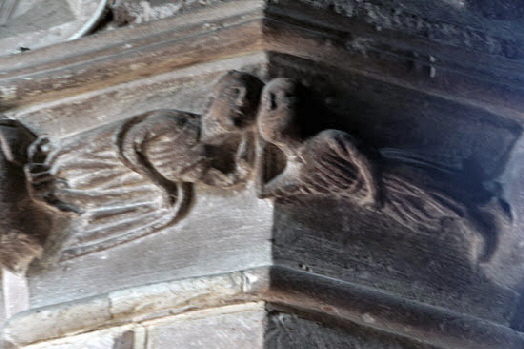 |
|||||||||
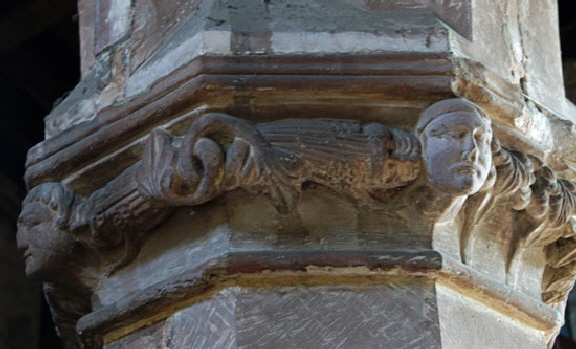 |
|||||||||
|
Left : Two beasts with the heads of men are addorsed with their tails intertwined. Right: This looks for all the world like a pair of lovers. Surely not? |
|||||||||
 |
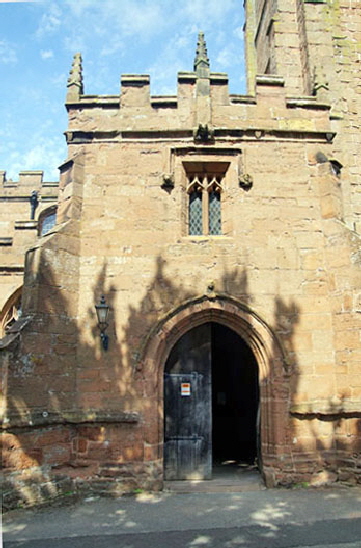 |
||||||||
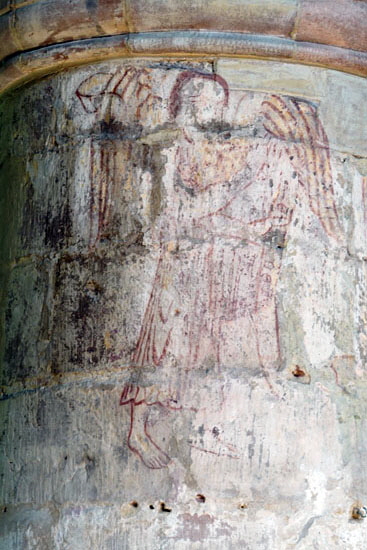 |
|||||||||
|
Left: The Norman columns also have traces of painting, including this angel. Centre: This Norman doorway leads from the south end of the nave into th area t the base of the tower. Right: The south porch is in perpendicular style and has trio of carvings. It is, of course, later than the main body of the church. |
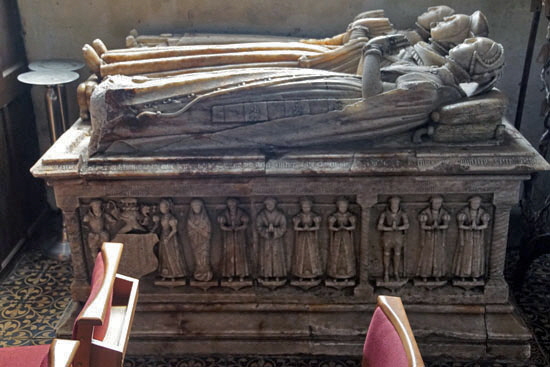 |
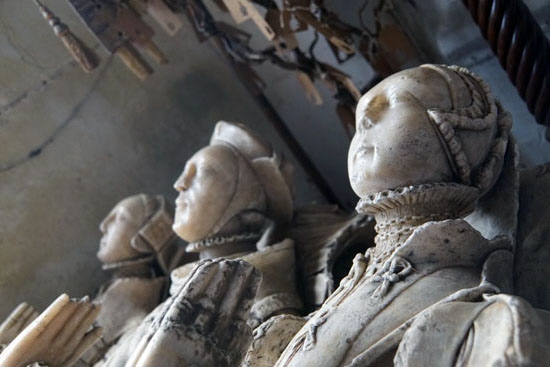 |
||||||||||
|
Left and Right: The alabaster monument to in the north chapel to Sir Robert Broke (d.1558) and his two wives. |
|||||||||||
 |
|||||||||||
|
This grotesque sits above the south doorway. It does not appear ever to have been a gargoyle in the proper sense of the word because it has no apparent rainwater function. The face is not grotesque at all. The creature is holding something beneath him - you can clearly see his left had supporting it while the right hand might be clutching it in the centre. But what is “it”? Some kind of musical instrument? |
|||||||||||
